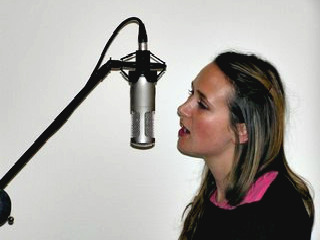Recording Vocals
In a Home Recording Studio

RECORDING VOCALS.
What is the best way to get a great vocal music recording in your Home Recording Studio? What equipment do you need, how should you prepare the room and what is the best vocal recording mic. Should you record vocals wet or dry? Vocals can be the hardest instrument to record but, with a good computer, DAW and microphone
You can create vocal recordings that sound good with your other instruments, but, there are a few things you need to do in order to get the best vocal recording.
Soundproofing
Soundproofing is an important part of getting a great vocal music recording as vocals need to be recorded as dry as possible. The room space needs to be dead.
If the vocal is recorded in a room with reflective walls the reflections from the walls will be recorded too. These recorded reflections will affect the quality of the recording and will be impossible to remove completely.
If you add compression or reverb when mixing, the reflected sound will be affected as well as the vocal recording. This will make it more difficult to get the sound that you want when mixing.
The things that you can do to help soundproofing your room are covered in other pages on this site, so, I won't go over it again here.
Microphone
The best microphone to use is a large diaphragm condenser microphone, as they record a wide frequency spectrum so you can record all the frequencies of a vocal performance.
Dynamic microphones produce a midrange frequency sound can be used to record vocals but it will depend on the sound you want in your recording. This type of mic will produce a mid to low frequency sound which will lack the sparkle of the high frequencies.
Microphone Position
The distance the microphone is from the singer will affect the recording. If the mic is positioned right in front of the singers mouth you will get what is call the proximity effect. This produces an enhanced low frequency response which can add a warmth to the sound making it fuller and deeper.
It comes with a price though as you get the singers s, t, and p sounds in the recording as well. These sibilance and plosive sounds can be reduced using a pop shield.
Other ways of reducing the sibilance and plosive sounds is to place the microphone so the singer doesn't sing directly into the mic.
One more thing you can do is to place the microphone in a shockmount, this will help to reduce rumble from low frequency vibrations.
Microphone Pattern
A cadioid pattern is the best to use for recording vocals. They record the sound in front of them excluding most sound from other directions. The other patterns will pick up more reflections. But, if you are recording in a very dead room or better yet a vocal booth, a omni pattern microphone might produce a more natural sound.
Preamp
The type of preamp you use when recording vocals will have an effect on the recording. Having said that, most audio interfaces have a preamp built into them, and, you might find that these produce the sound that you want.




